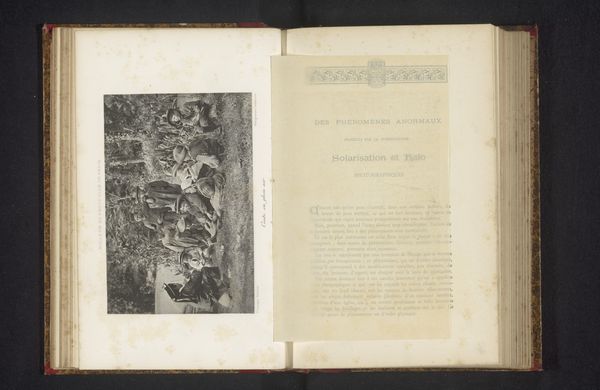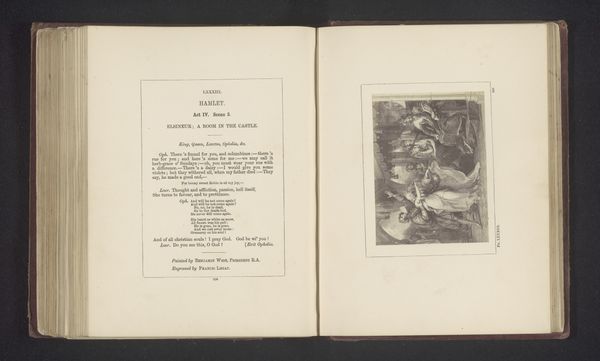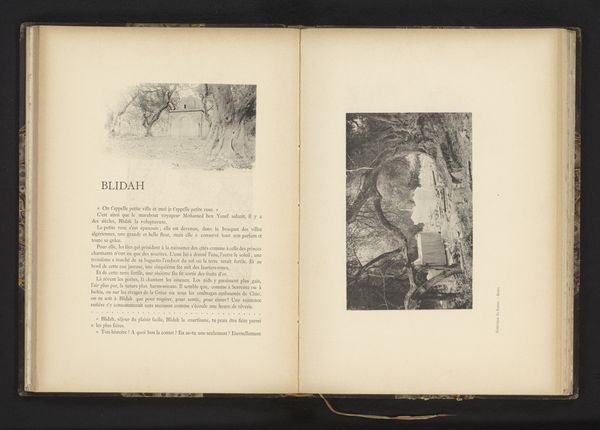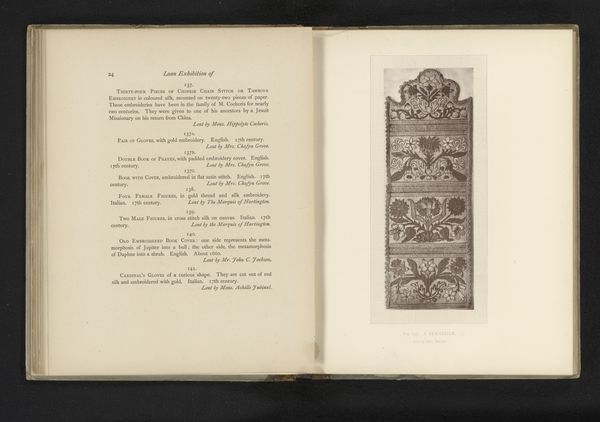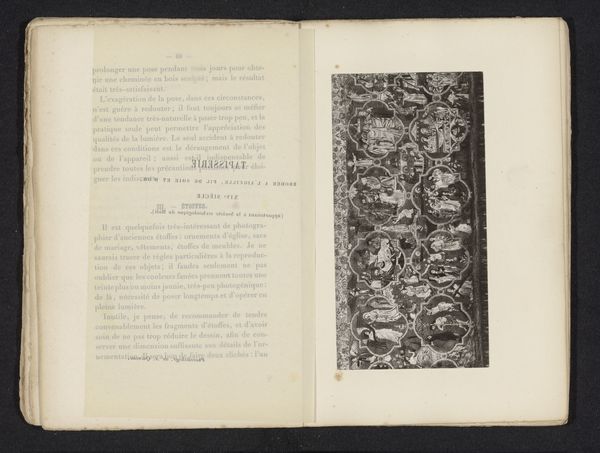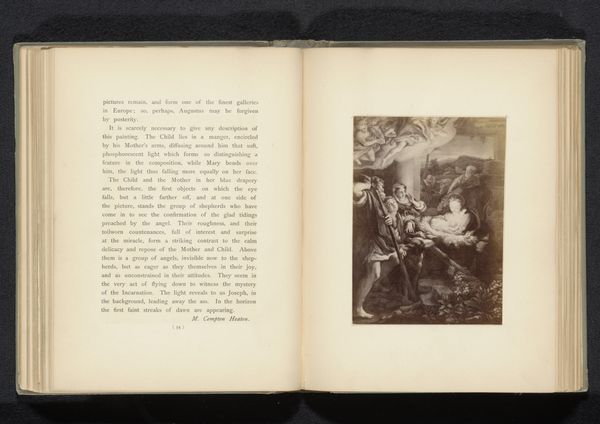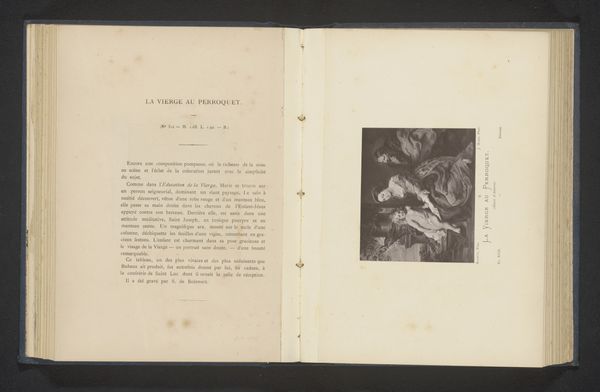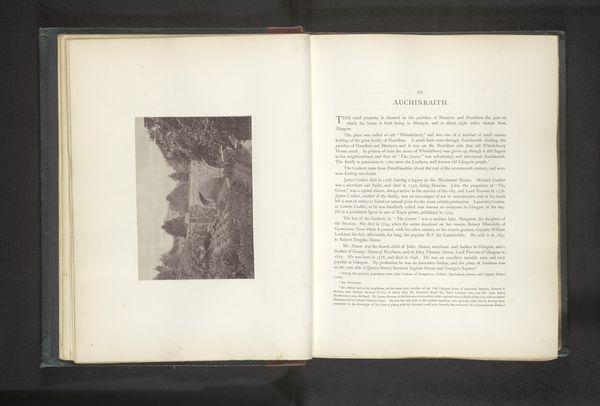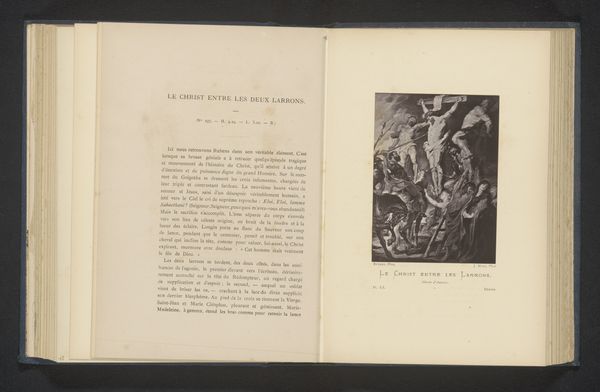
Deel van een borduurwerk met een beeltenis van Apollo en de muzen before 1874
0:00
0:00
drawing, silk, print, textile, paper, engraving
#
drawing
#
silk
# print
#
textile
#
paper
#
11_renaissance
#
history-painting
#
engraving
Dimensions: height 150 mm, width 176 mm
Copyright: Rijks Museum: Open Domain
Editor: This is "Deel van een borduurwerk met een beeltenis van Apollo en de muzen," or "Part of an Embroidery Depicting Apollo and the Muses," created before 1874, featuring silk, textile, paper, and possibly engraving techniques. It appears to be an illustration in a book about needlework. The details are quite dense, but I find it interesting that a classical subject matter has been represented using a craft form. What do you make of this, as an artwork that evokes art history? Curator: It is fascinating, isn't it? Look at how the artist renders the classical figures, Apollo and the Muses, not in marble or paint, but in thread. The very act of embroidering, often associated with domesticity and the feminine, is here used to depict figures representing high art, music, and intellectual pursuits, largely regarded in early modern Europe as inherently masculine activities. Editor: That’s an interesting tension. The material and subject seem at odds. Does this imply a challenge to traditional gender roles? Curator: It's quite possible. Embroidery was a skilled craft, often passed down through generations of women, carrying its own symbolic weight and cultural memory. The choice to depict Apollo and the Muses in this medium could be interpreted as a deliberate act of subversion, weaving female creativity into the dominant narrative of art history. Editor: So, by using thread and needle, traditionally "feminine" tools, the artist is almost reclaiming these iconic figures? Curator: Precisely. Consider also how textiles can tell stories, acting as a tangible link to the past and an important cultural practice. This particular embroidery may reference historical tapestries, yet shrinks in scale from a vast wall-hanging to something closer in intimacy to a drawing on paper, ready to be bound within a book. Editor: I hadn’t considered how its medium is not exactly typical for either a tapestry or history painting. Thank you; that gives me a lot to think about. Curator: Indeed! The piece allows us to reflect on how materials themselves can alter our understanding of art-historical subjects.
Comments
No comments
Be the first to comment and join the conversation on the ultimate creative platform.
